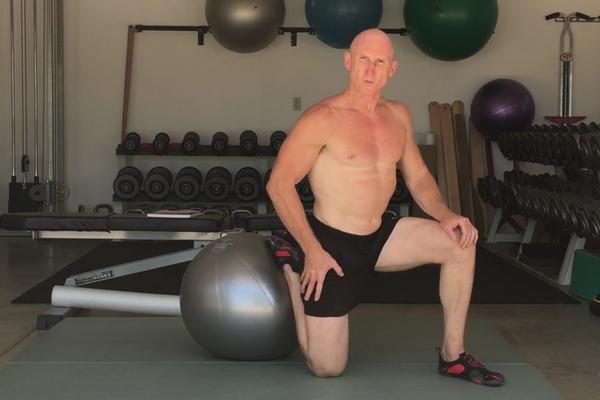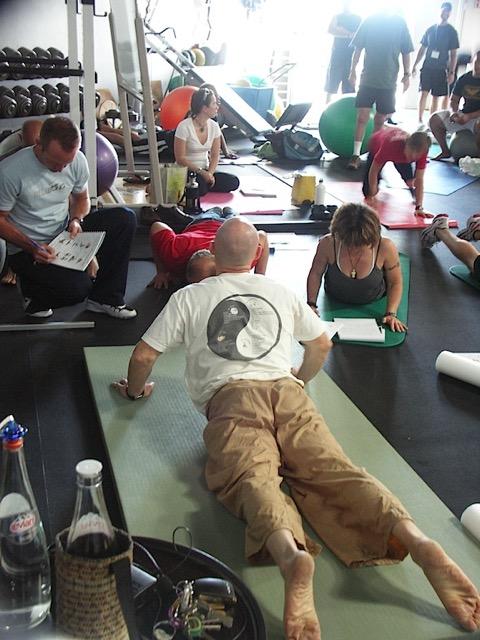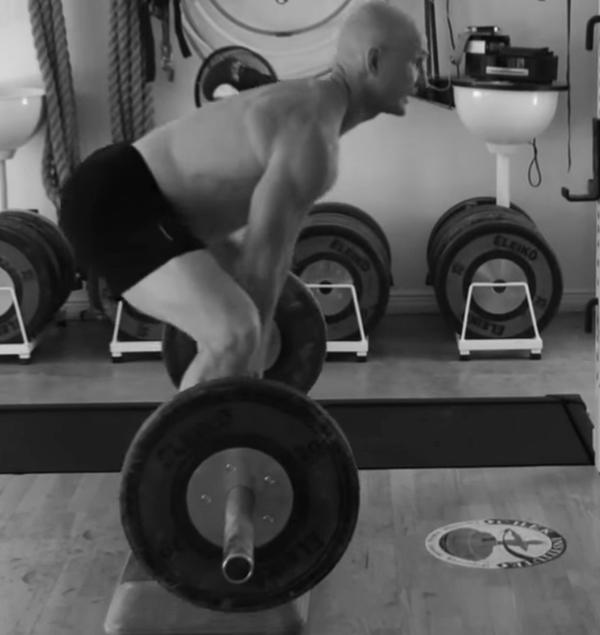Stretching The Flexor Chain
by Paul Chek

 The flexor chain encompasses the many muscles that flex the body or bend it forward, which is why you need to keep it as flexible and supple as possible. However, many people forget or ignore that advice as they maintain that muscular, sculpted “six-pack” look. Unfortunately, this drive to look good comes with a price.
The flexor chain encompasses the many muscles that flex the body or bend it forward, which is why you need to keep it as flexible and supple as possible. However, many people forget or ignore that advice as they maintain that muscular, sculpted “six-pack” look. Unfortunately, this drive to look good comes with a price.
Many people regularly experience pain in the neck and shoulders or feel trigger points between their shoulder blades. Pain in the middle back after sitting for long periods of time or lifting weights is also common.
Think of your muscles as springs and your spine being in the middle of those springs that bend your body forward and pull it backward. If your chest, abdomen, quads or hip flexors get tight, they tend to pull your chest down and your shoulders and head will pull forward.
After exercise routines that involve a lot of pushing or crunching or even heavy lunges, you need to stretch these flexors out and keep your chest as mobilized as much as possible.
In this video, you’ll learn six stretches and mobilizations to maintain flexibility in the flexor chain.
One critical caveat to monitor: If you get into the position but do not feel a stretch, this is a good indication that you are not tight in this area and don’t need to perform it.
A good stretch program is designed to balance the body. You need only stretch areas that are short and tight which is why generalized stretching programs are not very effective and can be potentially harmful.
Imagine your body as a bicycle wheel with some spokes that are too tight while others are too loose. Loosening all of those spokes may tighten some areas, but can over-correct areas that weren’t tight at all. A good rule of thumb: Stretch what is short and tight. Strengthen what is loose and weak.
If you need more guidance, my book, How to Eat, Move and Be Healthy!, is a good starting point that features 20 flexibility assessments and stretches. For more advanced information about flexibility assessments and techniques, you should review The Golf Biomechanic’s Manual or The Tennis Biomechanic’s Manual. Both of these books can be useful for athletes competing in any sport.
Love and chi,
Paul


